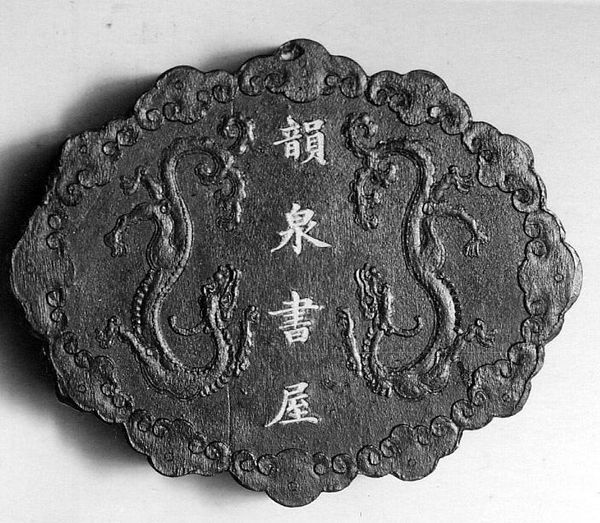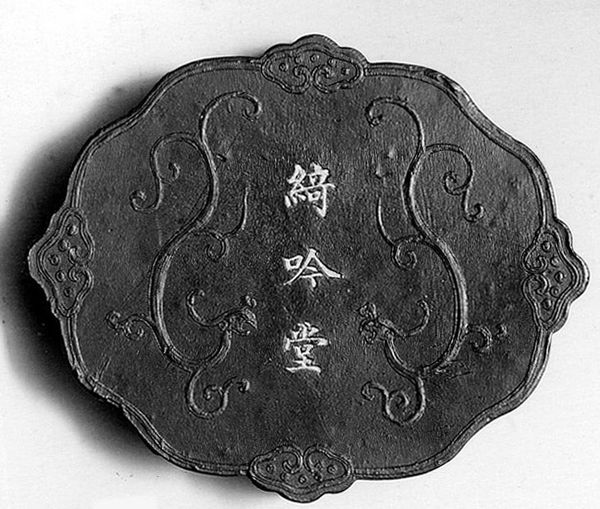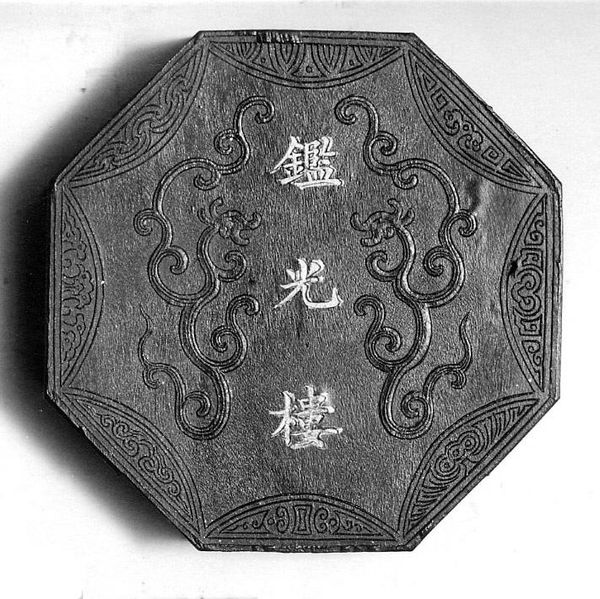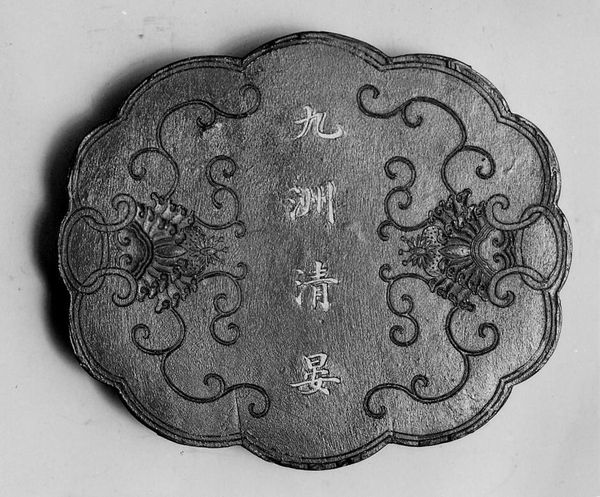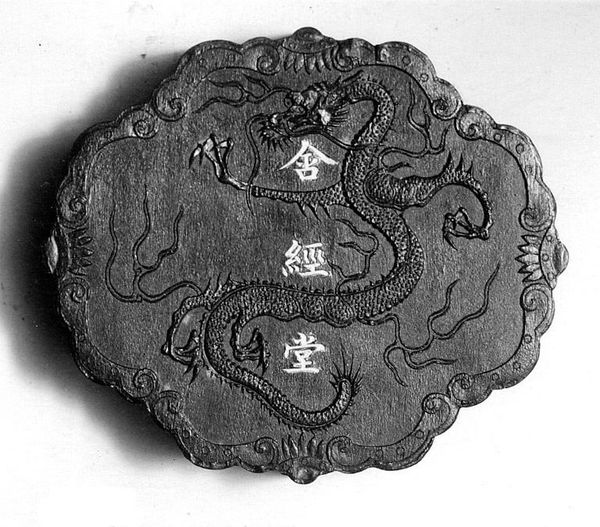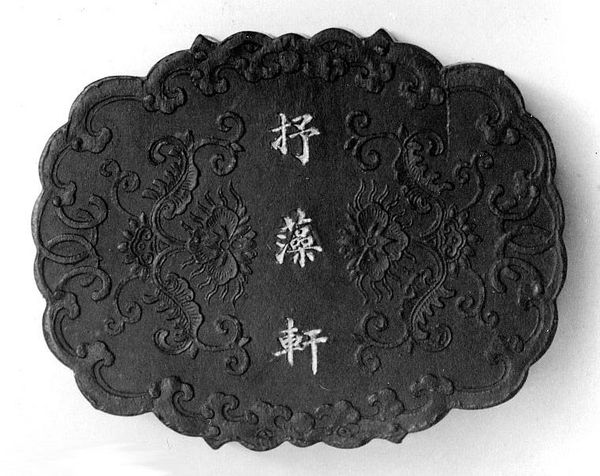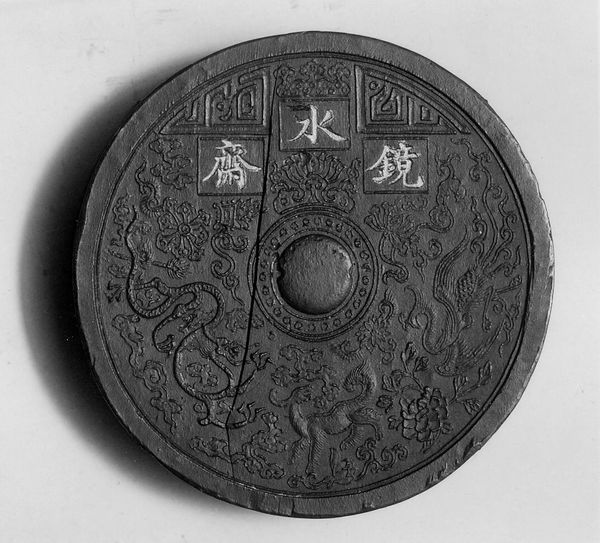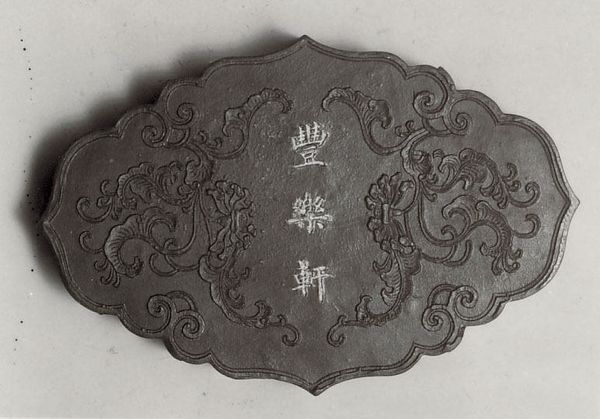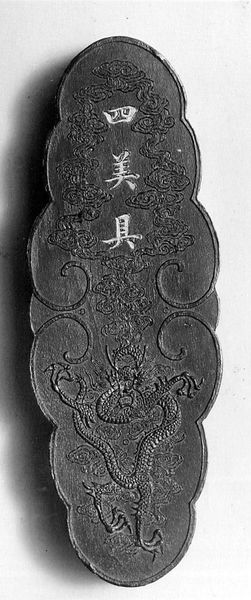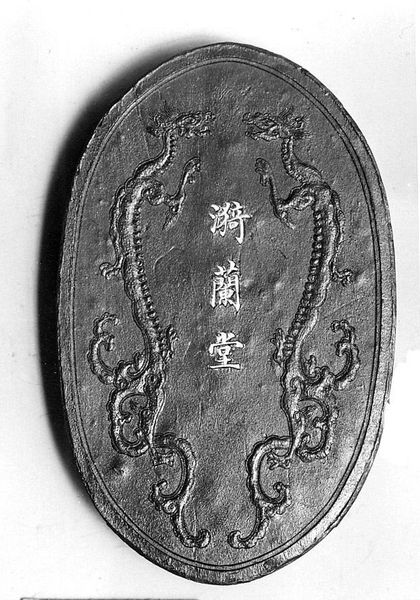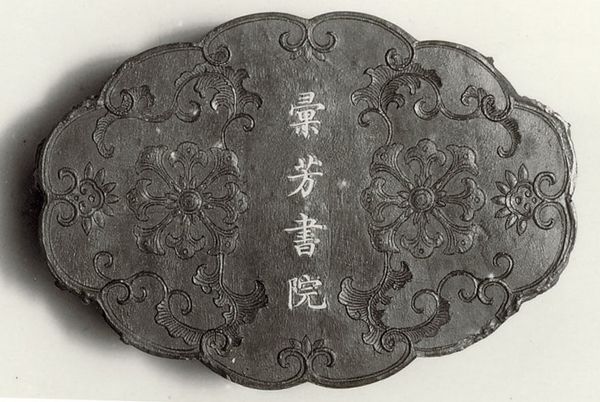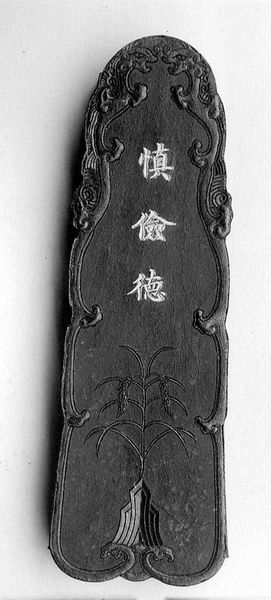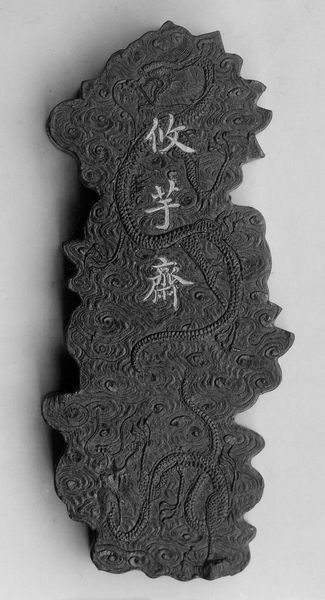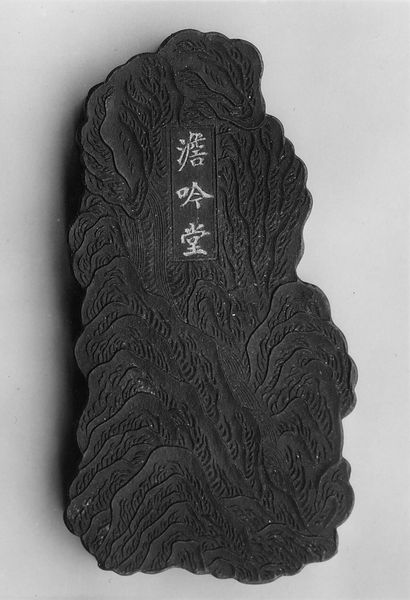
carving, relief, ink, sculpture, wood
#
carving
#
sculpture
#
asian-art
#
relief
#
ink
#
sculpture
#
wood
Dimensions: W. 2 3/8 in. (6 cm); L. 2 7/16 in. (6.2 cm)
Copyright: Public Domain
Editor: We are looking at "The Green and Remote (Small)? Hall," a carved ink relief likely made between 1871 and 1933. It's currently housed at the Metropolitan Museum of Art. The intricate details of the carving caught my eye. How might you interpret the artist's choices here, from a formalist perspective? Curator: The work is immediately striking for its self-contained, almost geometric, composition within the lotus-shaped form. The central inscription, carefully arranged in vertical columns, provides a focal point around which the surrounding floral motifs and intricate scrollwork dynamically swirl. The high contrast between the raised elements and the recessed background planes creates depth. What effect do you think the symmetrical organization has? Editor: It creates a sense of balance and order. The eye moves around the artwork in a predictable way because each quarter is like a reflected image. Does the consistency in carving depth relate to that sense of order? Curator: Precisely. The uniform depth and clarity in the carving suggest a carefully controlled execution. The precision eliminates hierarchy among the pictorial and textual components and allows a measured engagement across the whole. Notice, too, how the contours define forms which provide their own visual harmony within their frames. The artist exploits shape and surface quality of both positive and negative spaces in creating formal relationships. Editor: So it’s the relationship between the forms and the surfaces that create that harmony, as opposed to needing any additional contextual elements? Curator: Correct. Formalism concerns itself with intrinsic aesthetic values, the "what" and "how," rather than the "why." This piece emphasizes how balanced, symmetrical design and skillful carving come together to produce an object of refined elegance. Editor: It is impressive how focusing on the structural aspects of this piece yields a complete aesthetic experience, independent of any need for interpretation. Curator: Yes, the power is in the form itself.
Comments
No comments
Be the first to comment and join the conversation on the ultimate creative platform.
